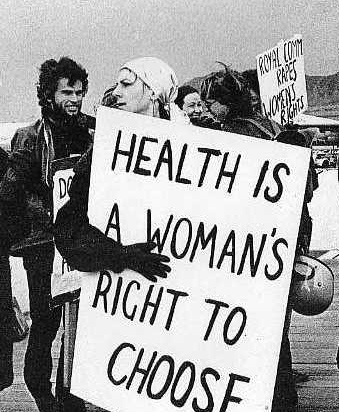–Post by ALRANZ National President Dr. Morgan Healy. Originally posted at our old blog on 27 October 2011–
The planned release of abortion statistics by Statistics NZ on Friday (28 October) is an annual event (delayed for several months this year by the terrible tragedy of the Christchurch earthquakes). The usual response is for anti-choice groups to either expound upon the atrocity of the loss of human life or call into question the laws upon which these abortions are being performed (and for flavour adding in medically inaccurate claims that abortion has long-term physical and psychological implications).
On the other hand, there are the pro-choice groups like ALRANZ, who use the release of this data each year as a call for law reform. We usually point out the fact that New Zealand’s current abortion laws criminalise women and are archaic and out of date (a point which I heartily endorse).
However, I want to challenge this paradigm and offer a different way of conceptualising and discussing abortion. Instead I want to take these statistics as an opportunity to postulate the following – what if X number of abortions were understood not as failures on the part of women to control both their own fertility through the use of contraception and their sexuality through abstinence, but instead as women exercising a fundamental human right to control their reproduction? What if we (as a society) considered X number of women not as terminating X number of lives, but instead strived to appreciate the complex, symbiotic relationship which exists between women and foetus and allow that no woman takes the termination of a pregnancy lightly (or does so without ample consideration).
I honour the sentiment of Anne Furedi, Chief Executive of BPAS, when she disputes the phrase that abortion should be safe, legal and rare. While calling on the absolute necessity of the first two, she queries why abortion should or could ever be rare. This is not to discount the need for comprehensive sexuality education and access to free, widely available contraception. Instead, I think the latter must go hand in hand with safe and legal abortion services as part of a full suite of sexual and reproductive health services. However, it is to wonder why abortion is constituted as anything other than a viable and reasonable option when a woman finds herself with an unwanted or unplanned pregnancy? Rare only serves to perpetuate the idea that there is something inherently wrong with the entire concept – and by extension the woman who goes through with the procedure. What this accomplishes is not a reduction in abortions but punishing women for their sexual and reproductive decisions.
Ultimately I think abortion is rarely the issue, it is what it represents – the right of women to bodily autonomy and their freedom to exercise that – and also how it is socially constructed – the desecration of human life at the hands of a would-be mother. Abortion is nothing more than a medical service. It may represent the woman who made the decision to terminate a pregnancy or the medical practitioner who agreed to perform the procedure or dispense the necessary drugs, but it is not the culprit. Abortion is a means to an end, not the demon some wish it to be. So why does society vilify it? Why the constant calls for the need to reduce numbers? To insist upon the most onerous procedures before access is granted? And, what is so terrifying about a sexually active woman taking steps to ensure that she can control the timing, spacing and number of children in whatever manner meets her needs?
I don’t have the time or inclination to digress here into a feminist treatise dedicated to answer these questions. I think it would be much more productive if New Zealand society began to ask similar questions of itself. I have used this auspicious abortion statistics day as a way of rethinking the historical interpretation of these numbers and posed more than a few questions as food for thought.
Perhaps it is time that New Zealand society started a new dialogue around the topic of abortion. I think it is important that the release of these statistics be used as an impetus for beginning these discussions. I encourage everyone reading to familiarise yourself with the current law and start a conversation on abortion with friends, families, lovers, whanau, local community groups, politicians, doctors, nurses and anyone who will listen. I want the annual abortion statistics day to be one where people stop to consider what it would mean to make that decision and reflect upon whether or not the current law (or any law) adequately meets the needs of women’s reproductive experiences.
In parting, I leave you, reader, with the final two questions: Is it criminal that X number of women took responsibility for their own reproductive health? Is it right that these women had to cede their decision-making ability to two certifying consultants, who verified that they meet one of the grounds in the Crimes Act? I certainly could not answer affirmatively to either. If you couldn’t either than it might be time to become more involved in the movement for change.

